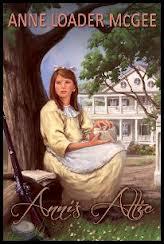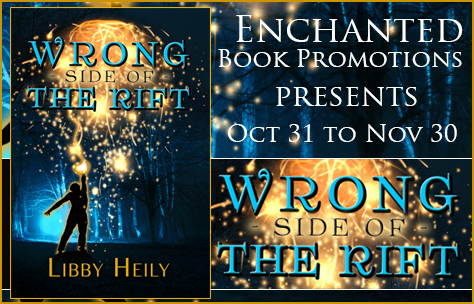10 things you should know about YA books but were afraid to ask
The best books published appeal to the heart of who we are. These parts are the links that connect our childhood to our adult lives. They connect the heart to the brain and the dream world to reality. Many of these books like The Wizard of Oz, To Kill a Mockingbird, and the Harry Potter Series are remembered and revisited many times over the course of a reader’s life. Since older readers may hide the fact they are reading Divergent or The Maze Runner these novels have affected our culture. So it’s due time for readers to know the facts about YA books even if they are afraid to ask:
- Young adult books are actually an age range of individual books from an assorted genre. YA to itself is not a genre, it’s a demographic, but people of all ages tend to gravitate to its literature.
The age range for YA books is from 12-18. Middle grade (MG) books target 8-12 year old children. Anne’s Attic, by Anne McGee is a perfect example of a YA book. It’s a novel set in the Deep South during the Civil War—perfect reading for any teen studying about the American Civil War. The Koolura Series, adventures of a pre-teen girl with psychic ability, attracts the MG crowd. YA and MG books have overlapping demographics, but their main characters are usually the age of the reader.
Young adult novels can be pulled from many different genres. Michael Thal’s science fiction novel, The Abduction of Joshua Bloom is the story of a 17 year-old boy abducted by aliens. Letters to Juniper, by Peggy Tibbetts, is a story of a modern-day girl forced to live with her dad in a neo-Nazi community off the grid as if they were in the 1850s. And Jessica Tornese’s Linked Through Time series are imaginative time travel yarns. All of these books are drawn from different categories of literature.- YA books always have a teen protagonist. Teen problems are highlighted, and it is up to the teen characters to solve them. Young adult books speak to teens and that means highlighting their problems—high school, drinking, sex, parents, first love, and bullying are to name just a few. What draw older readers to these books are the fond memories of their youth.
Most writers of YA books are not teenagers. They are adults who recall their teen years, remember the adversities they dealt with and recall their emotional turmoil. Goodbye Tchaikovsky is a case in point. Here a talented teen violinist wakes up on his birthday deaf. The author took the emotional reality of sudden hearing loss that affected him and placed that turmoil into his young protagonist. The result is a character study of a teenage boy growing up between the Deaf and Hearing worlds.
- Many YA novels are written in the first person. The basic reason for this is simple—teens tend to embrace their own first person narratives and are more inwardly focused than adults.
- To keep the teen reader riveted to the books they read, most YA writers produce novels that are short and punchy, quick paced, and filled with dialogue. Most young adult novels hover around the 70,000-word mark.
- There are adult characters in YA and MG books. For example, in The Legend of Koolura, Koolura Akopyan’s nemesis is a middle-aged drifter bent on her destruction. It is up to this pre-teen to outwit the bad guy—a familiar theme throughout YA and MG literature.
Many YA stories deal with divorce, suicide, racism, teen pregnancy, cancer, rape—the list goes on. In Koolura and the Mystery of Camp Saddleback, Koolura finds herself at a sleep-away camp for the summer. Koolura and her friends need to deal with vandalism, anti-Semitism, and deafness. Teens today have to cope with adult problems. YA literature responds to that experience.
- YA books don’t preach to kids. They set up problems which teen protagonists are forced to deal with. The Hunger Games by Suzanne Collins deals with a dystopian society that sends its youth into a futuristic arena to fight each other to the death. The sole survivor is the victor. A teen reader may learn from the read and perhaps change the way he or she does thing.
YA books tell wonderful stories written from the teenager’s point of view. They attract readers of all ages interested in a short, fun read. So, no matter what your age—a pre-teen looking for a mentor, a teen interested in the experiences of his peers, or an adult reminiscing the past, YA books have something for everyone. Happy reading!
 The age range for YA books is from 12-18. Middle grade (MG) books target 8-12 year old children.
The age range for YA books is from 12-18. Middle grade (MG) books target 8-12 year old children.  Most writers of YA books are not teenagers. They are adults who recall their teen years, remember the adversities they dealt with and recall their emotional turmoil.
Most writers of YA books are not teenagers. They are adults who recall their teen years, remember the adversities they dealt with and recall their emotional turmoil.  Many YA stories deal with divorce, suicide, racism, teen pregnancy, cancer, rape—the list goes on. In
Many YA stories deal with divorce, suicide, racism, teen pregnancy, cancer, rape—the list goes on. In 


I have read YA books even though I am a senior citizen. I don’t think it has anything to to do with any memories from childhood; the situations appeal to me even though the characters are teenagers.
Kudos to you! I hadn’t thought of that!